#The Regulator
Explore tagged Tumblr posts
Text

So, here's my latest theory about Mrs. Flood.
The Legend of Ruby Sunday only confirmed that she knows about these gods and what they're doing after speaking directly to us in The Church on Ruby Road to let us know she knows what a TARDIS is and then saying none of what was happening was her business in 73 Yards.
She seems to be neutral towards the gods, and what the faeries were doing with Ruby was not her business. So she might only get involved in special circumstances. Although she did say this last episode "I'm always hiding myself away", so she might be running away from something or someone.
I propose she's actually The Regulator, previously known as Bilis Manger from Torchwood.

In recent-ish audios from Big Finish, he's been revealed as this entity that acted to maintain the balance between light and dark. The Regulator was the name the Time Lords gave them. He's been known to be a servant of the Beast's spawn, Abaddon, but also to destroy races like the Daemons.
This concept was introduced in The Sublime Porte from last year's War Master boxset. That range is Scott Handcock's baby, serving as its producer and director. Scott Handcock who is now script editor on the show.
Bilis Manger was also (I'm guessing here, as I've not been able to find anything solid) created by Russell T Davies for Torchwood, and he's returned to the audio continuation of Torchwood (as well as the main range) in which Russell consulted, so he must have him pretty fresh in his mind. There's also Sigil, a Bilis centric story from the Torchwood main range by Ash Darcy, who may or may not actually be Russell T Davies himself.
This is all circumstantial, I know, but it honestly doesn't sound too far-fetched. The creatives have history with this character and narratively it fits. So...
Oh, the Regulator has also hunted Osirans before...
#doctor who#fifteenth doctor#15th doctor#the legend of ruby sunday#mrs flood#bilis manger#the regulator#big finish#torchwood#empire of death#pantheon of discord#sutekh
22 notes
·
View notes
Text






The Regulator
by Corbeyran and Moreno
Heavy Metal
12 notes
·
View notes
Video
youtube
Clutch - The Regulator
#youtube#clutch#clutch band#the regulator#blast tyrant#neil fallon#tim sult#dan maines#jean-paul gaster#stoner rock#hard rock#blues rock#music#music is love#music is life#music is religion#rainingmusic#raining music
6 notes
·
View notes
Text
I’m about to save you thousands of dollars in therapy by teaching you what I learned paying thousands of dollars for therapy:
It may sound woo woo but it’s an important skill capitalism and hyper individualism have robbed us of as human beings.
Learn to process your emotions. It will improve your mental health and quality of life. Emotions serve a biological purpose, they aren’t just things that happen for no reason.
1. Pause and notice you’re having a big feeling or reaching for a distraction to maybe avoid a feeling. Notice what triggered the feeling or need for a distraction without judgement. Just note that it’s there. Don’t label it as good or bad.
2. Find it in your body. Where do you feel it? Your chest? Your head? Your stomach? Does it feel like a weight everywhere? Does it feel like you’re vibrating? Does it feel like you’re numb all over?
3. Name the feeling. Look up an emotion chart if you need to. Find the feeling that resonates the most with what you’re feeling. Is it disappointment? Heartbreak? Anxiety? Anger? Humiliation?
4. Validate the feeling. Sometimes feelings misfire or are disproportionately big, but they’re still valid. You don’t have to justify what you’re feeling, it’s just valid. Tell yourself “yeah it makes sense that you feel that right now.” Or something as simple as “I hear you.” For example: If I get really big feelings of humiliation when I lose at a game of chess, the feeling may not be necessary, but it is valid and makes sense if I grew up with parents who berated me every time I did something wrong. So I could say “Yeah I understand why we are feeling that way given how we were treated growing up. That’s valid.”
5. Do something with your body that’s not a mental distraction from the feeling. Something where you can still think. Go on a walk. Do something with your hands like art or crochet or baking. Journal. Clean a room. Figure out what works best for you.
6. Repeat, it takes practice but is a skill you can learn :)
#deconstruction#ex christian#ex evangelical#agnosticatheist#deconstructing christianity#agnostic#ex religious#exevangelical#religious trauma#trauma#cptsd#therapy#life skills#leftist#self healing#healing is a process#Emdr#emdr therapy#ifs therapy#emotional regulation#emotional health#heading#trauma therapy#religious trauma syndrome#anti capitalist#humanism#coping mechanism#coping skills#cult survivor#deconvert
55K notes
·
View notes
Text
cant tell you how bad it feels to constantly tell other artists to come to tumblr, because its the last good website that isn't fucked up by spoonfeeding algorithms and AI bullshit and isn't based around meaningless likes
just to watch that all fall apart in the last year or so and especially the last two weeks
there's nowhere good to go anymore for artists.
edit - a lot of people are saying the tags are important so actually, you'll look at my tags.
#please dont delete your accounts because of the AI crap. your art deserves more than being lost like that #if you have a good PC please glaze or nightshade it. if you dont or it doesnt work with your style (like mine) please start watermarking #use a plain-ish font. make it your username. if people can't google what your watermark says and find ur account its not a good watermark #it needs to be central in the image - NOT on the canvas edges - and put it in multiple places if you are compelled #please dont stop posting your art because of this shit. we just have to hope regulations will come slamming down on these shitheads#in the next year or two and you want to have accounts to come back to. the world Needs real art #if we all leave that just makes more room for these scam artists to fill in with their soulless recycled garbage #improvise adapt overcome. it sucks but it is what it is for the moment. safeguard yourself as best you can without making #years of art from thousands of artists lost media. the digital world and art is too temporary to hastily click a Delete button out of spite
#not art#but important#please dont delete your accounts because of the AI crap. your art deserves more than being lost like that#if you have a good PC please glaze or nightshade it. if you dont or it doesnt work with your style (like mine) please start watermarking#use a plain-ish font. make it your username. if people can't google what your watermark says and find ur account its not a good watermark#it needs to be central in the image - NOT on the canvas edges - and put it in multiple places if you are compelled#please dont stop posting your art because of this shit. we just have to hope regulations will come slamming down on these shitheads#in the next year or two and you want to have accounts to come back to. the world Needs real art#if we all leave that just makes more room for these scam artists to fill in with their soulless recycled garbage#improvise adapt overcome. it sucks but it is what it is for the moment. safeguard yourself as best you can without making#years of art from thousands of artists lost media. the digital world and art is too temporary to hastily click a Delete button out of spite
23K notes
·
View notes
Video
youtube
The Dream Syndicate - The Regulator
1 note
·
View note
Text
average United States contains 1000s of pet tigers in backyards" factoid actualy [sic] just statistical error. average person has 0 tigers on property. Activist Georg, who lives the U.S. Capitol & makes up over 10,000 each day, has purposefully been spreading disinformation adn [sic] should not have been counted
I have a big mad today, folks. It's a really frustrating one, because years worth of work has been validated... but the reason for that fucking sucks.
For almost a decade, I've been trying to fact-check the claim that there "are 10,000 to 20,000 pet tigers/big cats in backyards in the United States." I talked to zoo, sanctuary, and private cat people; I looked at legislation, regulation, attack/death/escape incident rates; I read everything I could get my hands on. None of it made sense. None of it lined up. I couldn't find data supporting anything like the population of pet cats being alleged to exist. Some of you might remember the series I published on those findings from 2018 or so under the hashtag #CrouchingTigerHiddenData. I've continued to work on it in the six years since, including publishing a peer reviewed study that counted all the non-pet big cats in the US (because even though they're regulated, apparently nobody bothered to keep track of those either).
I spent years of my life obsessing over that statistic because it was being used to push for new federal legislation that, while well intentioned, contained language that would, and has, created real problems for ethical facilities that have big cats. I wrote a comprehensive - 35 page! - analysis of the issues with the then-current version of the Big Cat Public Safety Act in 2020. When the bill was first introduced to Congress in 2013, a lot of groups promoted it by fear mongering: there's so many pet tigers! they could be hidden around every corner! they could escape and attack you! they could come out of nowhere and eat your children!! Tiger King exposed the masses to the idea of "thousands of abused backyard big cats": as a result the messaging around the bill shifted to being welfare-focused, and the law passed in 2022.
The Big Cat Public Safety Act created a registry, and anyone who owned a private cat and wanted to keep it had to join. If they did, they could keep the animal until it passed, as long as they followed certain strictures (no getting more, no public contact, etc). Don’t register and get caught? Cat is seized and major punishment for you. Registering is therefore highly incentivized. That registry closed in June of 2023, and you can now get that registration data via a Freedom of Information Act request.
Guess how many pet big cats were registered in the whole country?
97.
Not tens of thousands. Not thousands. Not even triple digits. 97.
And that isn't even the right number! Ten USDA licensed facilities registered erroneously. That accounts for 55 of 97 animals. Which leaves us with 42 pet big cats, of all species, in the entire country.
Now, I know that not everyone may have registered. There's probably someone living deep in the woods somewhere with their illegal pet cougar, and there's been at least one random person in Texas arrested for trying to sell a cub since the law passed. But - and here's the big thing - even if there are ten times as many hidden cats than people who registered them - that's nowhere near ten thousand animals. Obviously, I had some questions.
Guess what? Turns out, this is because it was never real. That huge number never had data behind it, wasn't likely to be accurate, and the advocacy groups using that statistic to fearmonger and drive their agenda knew it... and didn't see a problem with that.
Allow me to introduce you to an article published last week.
This article is good. (Full disclose, I'm quoted in it). It's comprehensive and fairly written, and they did their due diligence reporting and fact-checking the piece. They talked to a lot of people on all sides of the story.
But thing that really gets me?
Multiple representatives from major advocacy organizations who worked on the Big Cat Publix Safety Act told the reporter that they knew the statistics they were quoting weren't real. And that they don't care. The end justifies the means, the good guys won over the bad guys, that's just how lobbying works after all. They're so blase about it, it makes my stomach hurt. Let me pull some excerpts from the quotes.
"Whatever the true number, nearly everyone in the debate acknowledges a disparity between the actual census and the figures cited by lawmakers. “The 20,000 number is not real,” said Bill Nimmo, founder of Tigers in America. (...) For his part, Nimmo at Tigers in America sees the exaggerated figure as part of the political process. Prior to the passage of the bill, he said, businesses that exhibited and bred big cats juiced the numbers, too. (...) “I’m not justifying the hyperbolic 20,000,” Nimmo said. “In the world of comparing hyperbole, the good guys won this one.”
"Michelle Sinnott, director and counsel for captive animal law enforcement at the PETA Foundation, emphasized that the law accomplished what it was set out to do. (...) Specific numbers are not what really matter, she said: “Whether there’s one big cat in a private home or whether there’s 10,000 big cats in a private home, the underlying problem of industry is still there.”"
I have no problem with a law ending the private ownership of big cats, and with ending cub petting practices. What I do have a problem with is that these organizations purposefully spread disinformation for years in order to push for it. By their own admission, they repeatedly and intentionally promoted false statistics within Congress. For a decade.
No wonder it never made sense. No wonder no matter where I looked, I couldn't figure out how any of these groups got those numbers, why there was never any data to back any of the claims up, why everything I learned seemed to actively contradict it. It was never real. These people decided the truth didn't matter. They knew they had no proof, couldn't verify their shocking numbers... and they decided that was fine, if it achieved the end they wanted.
So members of the public - probably like you, reading this - and legislators who care about big cats and want to see legislation exist to protect them? They got played, got fed false information through a TV show designed to tug at heartstrings, and it got a law through Congress that's causing real problems for ethical captive big cat management. The 20,000 pet cat number was too sexy - too much of a crisis - for anyone to want to look past it and check that the language of the law wouldn't mess things up up for good zoos and sanctuaries. Whoops! At least the "bad guys" lost, right? (The problems are covered somewhat in the article linked, and I'll go into more details in a future post. You can also read my analysis from 2020, linked up top.)
Now, I know. Something something something facts don't matter this much in our post-truth era, stop caring so much, that's just how politics work, etc. I’m sorry, but no. Absolutely not.
Laws that will impact the welfare of living animals must be crafted carefully, thoughtfully, and precisely in order to ensure they achieve their goals without accidental negative impacts. We have a duty of care to ensure that. And in this case, the law also impacts reservoir populations for critically endangered species! We can't get those back if we mess them up. So maybe, just maybe, if legislators hadn't been so focused on all those alleged pet cats, the bill could have been written narrowly and precisely.
But the minutiae of regulatory impacts aren't sexy, and tiger abuse and TV shows about terrible people are. We all got misled, and now we're here, and the animals in good facilities are already paying for it.
I don't have a conclusion. I'm just mad. The public deserves to know the truth about animal legislation they're voting for, and I hope we all call on our legislators in the future to be far more critical of the data they get fed.
#big cats#tiger king#my research#news#big cat public safety act#animal welfare#big cat welfare#legislation and regulation#vent post#long post#crouchingtigerhiddendata#more on the problems with the bill in the future
7K notes
·
View notes
Text

This Day in Metal 🤘


0 notes
Text

#emotional regulation#bpd#borderline personality disorder#actually bpd#actually borderline#bpd meme#bpd problems#bpd stuff#bpd shit#borderline problems#actually mentally ill#elainposting
26K notes
·
View notes
Text
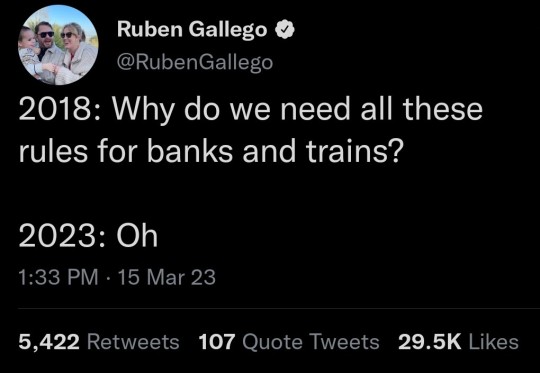
95K notes
·
View notes
Text
people when trauma victims act traumatized especially in a way that is unpalatable to them because it involves lashing out and unpredictable moods and having boundary issues rather than just being demure, sad, and consumable

#the surprise at unpredictability is always so fucking baffling to me. this is someone who’s been under extreme stress/duress#for ages. Do you think you can just bounce back. regulate everything immediately. when you’ve been in Survival Mode your whole#fucking life. LOL#you don’t just fucking Know how to be a human being. magically. because you’re out of the situation now. like.
34K notes
·
View notes
Text
I present you my "Donnie, the Emotionless, Absolutely Never Crying Badboy" collection:

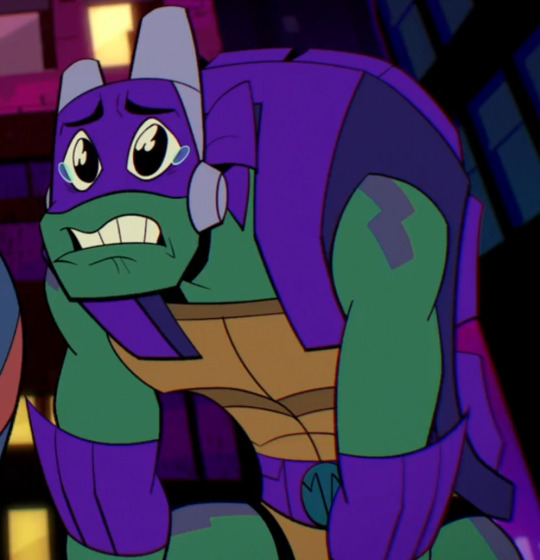

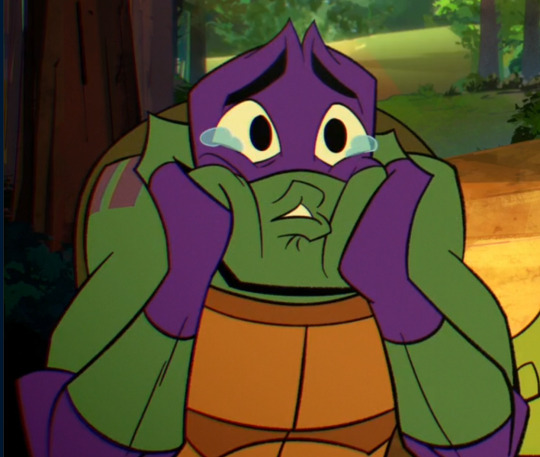

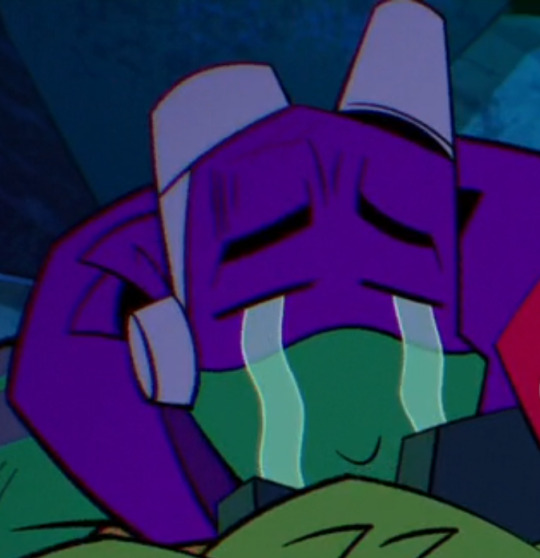




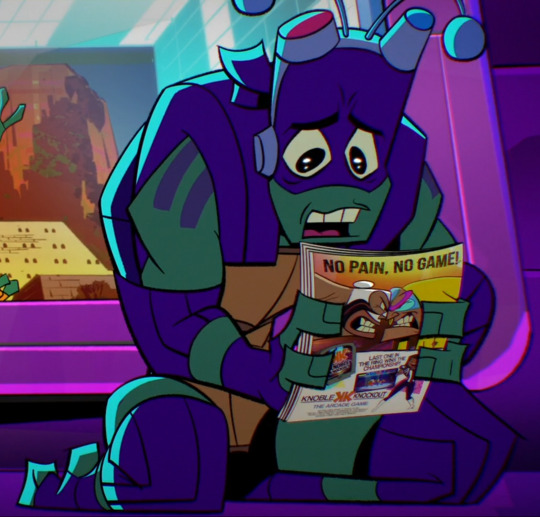




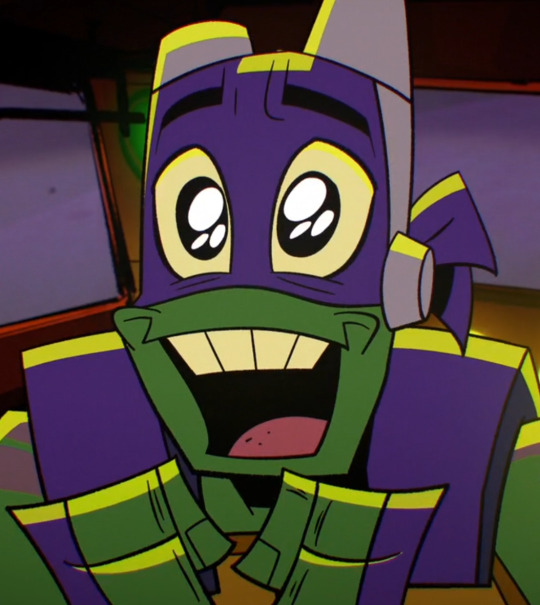


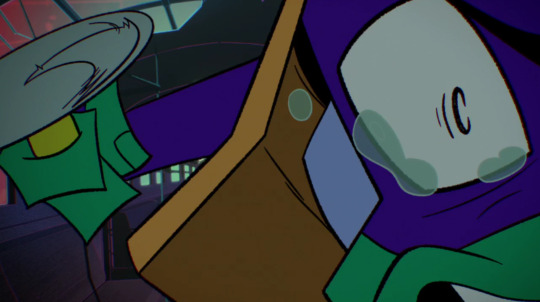

and, of course:

Yep, definitively no emotions here!
#rise donnie#rottmnt#my hobby is collecting crying/near crying donnie screenshots#he cries very easily actually and is bad at regulating emotions! he just needs to care a little!#the moment something 'gets through' (which isn't rare!) he's easily moved!#he's actually a crybaby! and we love and respect crybabies in this house!
5K notes
·
View notes
Text




always good to keep a screamhole handy
#danny phantom#danny fenton#college au#ember mclain#this one was a struggle to finish tbh#but the thinking around it is how ghosts handle stress#like#hmm#bc of the way they operate ghosts don’t have human emotional regulation#there is no shoving feelings down#they gotta go OUT#ghost fights and having fun in the ghost zone is usually enough#but in times of big stress sometimes he’s just gotta scream/wail it out#easier to just destress the ghost way yanno#less work#quicker recovery#also in this#displays of power aren’t inherently aggressive but they do affect how much respect you get#he’s just screaming into a mostly uninhabited void#but he’s the ghost king and he wasn’t really thinking#so just like#ghost nukes tf out of this little area#no harm no foul tho
7K notes
·
View notes
Text
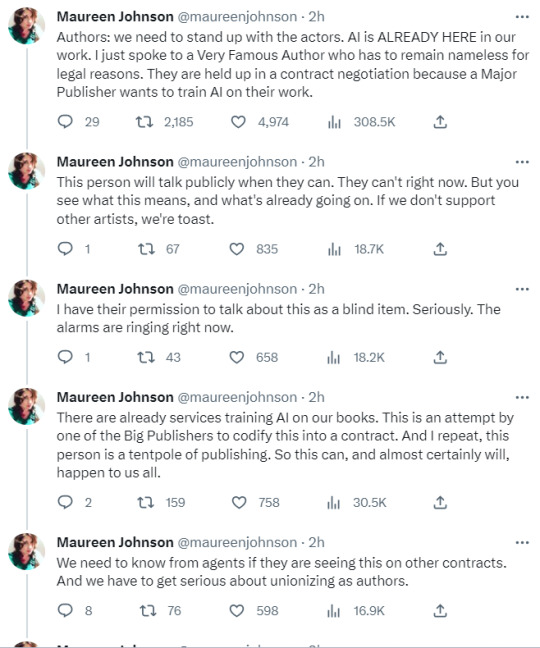
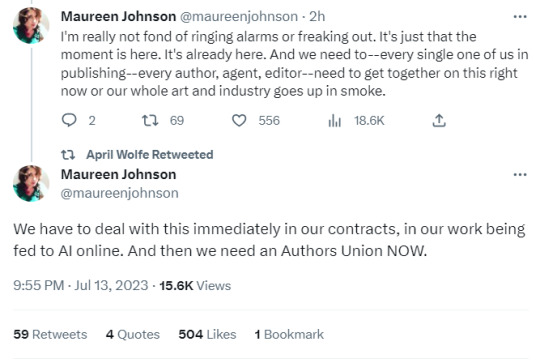
Alarm bells being rung by Maureen Johnson on AI and the Big Publishers
#I've already got academics wanting it put into their contracts that their work CAN'T be used to train AI#This is a scary time#ai MUST be regulated#on publishing#wga strike#sag aftra strike#sag-aftra strike#AUTHORS UNIONIZE
27K notes
·
View notes
Text
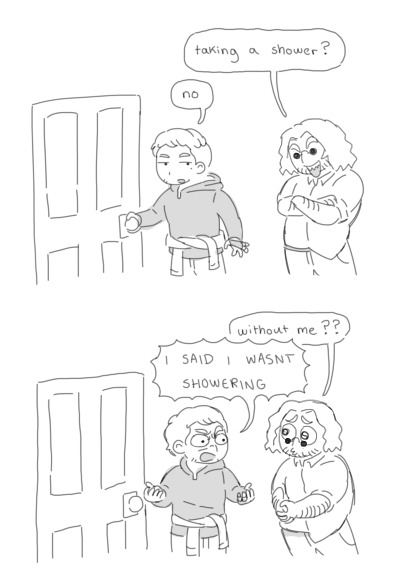
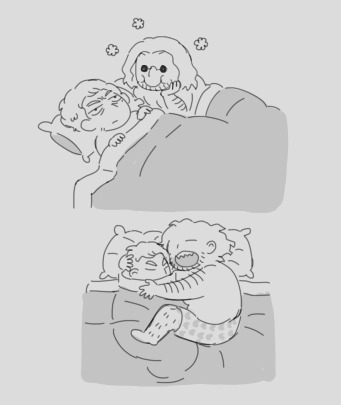

wintersberg i drew during a stream
#ethan winters#karl heisenberg#wintersberg#resident evil#resident evil fanart#rebhfun#resident evil village#resident evil 8#re8#karl is the type of person to over heat and just sleep in only his underwear#cold mold husband and hot metal husband#they can regulate each others temperatures#“haha ur so cold like my soldats”#and ethan beats him with a metal pipe
4K notes
·
View notes